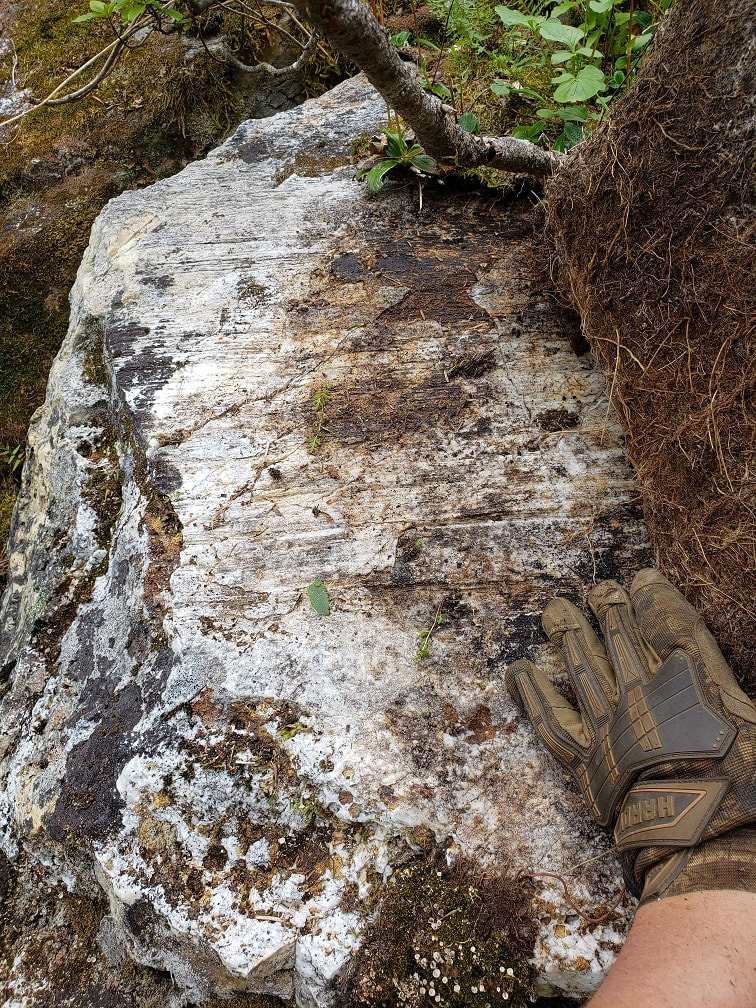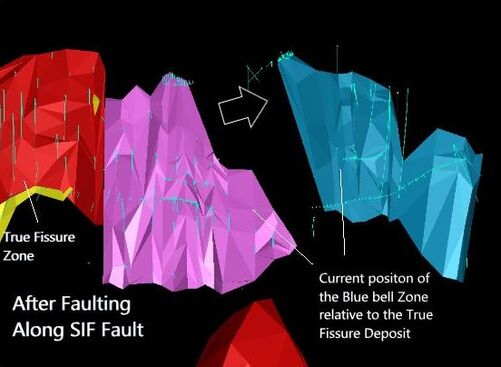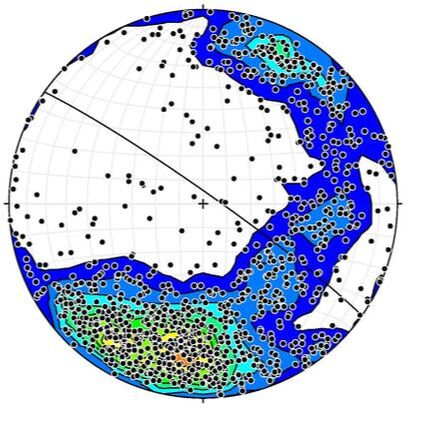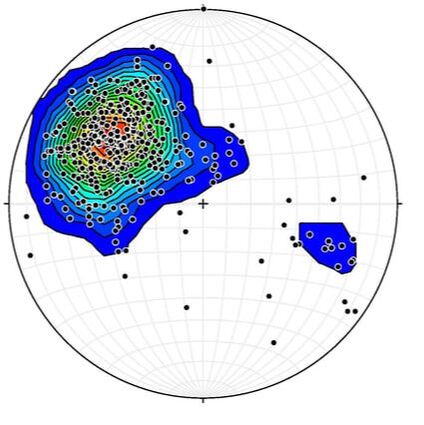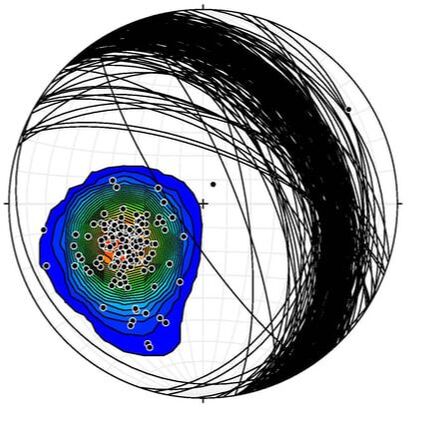ReConstructing a Jigsaw Puzzle
|
Structural Geology The structural geology of Thor is quite complicated, but it is the most important control on mineralization in combination with lithology. Thor Fault Zone ('TFZ') The structural geology is dominated by a large NNW-trending feature called the Thor Fault Zone. This feature dips moderately to the ENE (45 degrees). Virtually all of the economic mineralization of interest lies within this structural corridor, or the associated splays. The Thor Fault Zone extends throughout the entire Thor property. The full extent of the important feature is currently unknown. Much of the motion on this fault is normal, but it has a later overprint of strike lateral motion as evidenced by slickensides within the fault zone. |
|
Detachment of Zones within the Thor Deposit
One of the recent discoveries at Thor has been that the Blue Bell Zone has been 'faulted-off' the top of the True Fissure Zone, and pushed to the NNW along the SIF Fault Zone. This is shown in the image on the left. This explains why the Great Northern Zones to the southeast have two layers, and the area to the northwest (True Fissure) has only one layer. When the reconstruction is undertaken, it shows that at one time the Great Northern was overlain by the Blue Bell Zone, and it has become detached by a late, low-angle fault. |
Folding
The Folding at Thor is dominated by one single phase of folding. This folding predates the Thor Fault Zone and the related epithermal deposit and is oriented in a northwest direction. The folding is isoclinal in nature, and in places it can form very tight folds. To the east of the Thor Fault Zone, a single large anticline (Thor Anticline - which is in fact the famous Silvercup Anticline) controls much of the topography and localization of the True Fissure and Broadview Creeks. To the west of the Thor Fault Zone the topography is controlled by the tight folding in the Broadview and Sharon Creek Formations, and it can be seen that the axis of the folds have been deformed by movement along the Thor Fault Zone.
Structural and Lithological Control on Mineralization
Mineralization within the Thor Fault Zone is spatially related to the contact between the underlying Sharon Creek Formation and the overlying Broadview Formation. Because the location of this contact has been folded in a northwest trending direction, geological mapping is critical in locating this contact. Where this contact between the Sharon Creek/Broadview Formation comes into contact with the Thor Fault Zone, the lowest part of the Broadview Formation is mineralized. This contact is preserved in the rocks found to the east of the Thor Fault Zone at Thor, and to the west rocks of the non-receptive Sharon Creek Formation are generally found.
The Folding at Thor is dominated by one single phase of folding. This folding predates the Thor Fault Zone and the related epithermal deposit and is oriented in a northwest direction. The folding is isoclinal in nature, and in places it can form very tight folds. To the east of the Thor Fault Zone, a single large anticline (Thor Anticline - which is in fact the famous Silvercup Anticline) controls much of the topography and localization of the True Fissure and Broadview Creeks. To the west of the Thor Fault Zone the topography is controlled by the tight folding in the Broadview and Sharon Creek Formations, and it can be seen that the axis of the folds have been deformed by movement along the Thor Fault Zone.
Structural and Lithological Control on Mineralization
Mineralization within the Thor Fault Zone is spatially related to the contact between the underlying Sharon Creek Formation and the overlying Broadview Formation. Because the location of this contact has been folded in a northwest trending direction, geological mapping is critical in locating this contact. Where this contact between the Sharon Creek/Broadview Formation comes into contact with the Thor Fault Zone, the lowest part of the Broadview Formation is mineralized. This contact is preserved in the rocks found to the east of the Thor Fault Zone at Thor, and to the west rocks of the non-receptive Sharon Creek Formation are generally found.
|
Bedding (S0)
1,072 bedding surface measurements were taken at Thor within the Broadview Creek, Jowett and Sharon Creek Formations. This data was then plotted as poles to bedding on the figure to the left and show that there is only one phase of folding. The stereonet shows that the bedding is folded around an axis that trends northwesterly, and it is calculated to strike 310.5 degrees and plunges to the northwest at 49.7 degrees. The axial plane is calculated at 305.1 degrees and it deeps steeply to the northeast with a dip of 85.4 degrees. |
|
Plunge of Folds (F1)
The plunge of the folds was also measured in the field, and this shows a very close resemblance to the calculated fold plunge from the bedding planes (figure to the right) This data shows a very tight cluster that is in the expected position based on the S0 surfaces. One of the interesting features is a small cluster of points plunging to the southeast that is normal to the main cluster of points. |
|
Top of Vein (V1)
Typically, the top of the mineralized zones at Thor is encountered in drill holes, but there are several places where it is exposed at surface, particularly the Scab Zone between the True Fissure and Blue Bell Zones. A total of 171 locations were measured in a wide variety of areas at Thor, and the stereonet for the poles to this surface is shown on the figure to the left. The following conclusions can be made:
|
